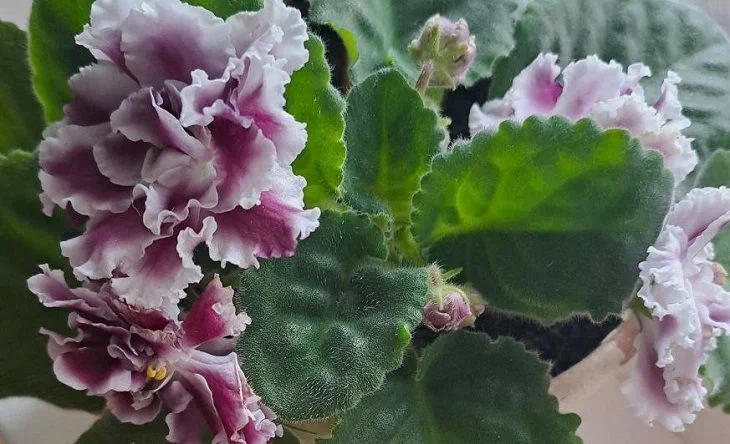Just imagine: you bought a leaf or a whole stalk of violet, fiddled with it for a long time, and when the plant finally produced buds, it turned out that they had nothing in common with the variety you so passionately dreamed of.
Of course, it may also happen that you have come across a fraudulent seller, but it is quite possible that the reason is different, says Anastasia Kovrizhnykh, an expert of the online publication BelNovosti, an agronomist, and a landscape designer.
According to the expert, the flowering of violet babies may differ from the flowering of the mother plant due to genes.
If you notice that spots or stripes of a different color (usually blue) appear randomly on your violet, mosaic chimerism is to blame. Moreover, sometimes this phenomenon leads to a change in the color of the leaves.
However, to be completely honest, it is worth mentioning that sometimes the color change does not occur in a chaotic manner, but is the same on all flowers, and this looks very beautiful.

This is not the only reason for the change in color of the violet, which from flowering to flowering can change, for example, from white to blue.
In this case, it is worth dealing with the acidity of the soil, which may have increased, or the ambient temperature, which has also increased.
In addition, experienced gardeners say that the same variety can bloom differently in winter and summer on a windowsill and on a shelf.
Earlier, the expert shared a list of 8 spectacular garden roses.









